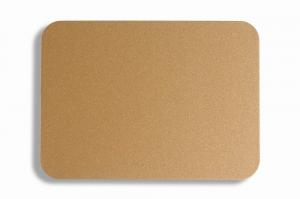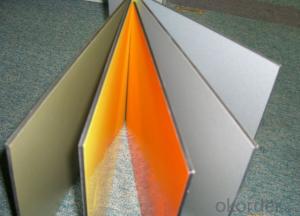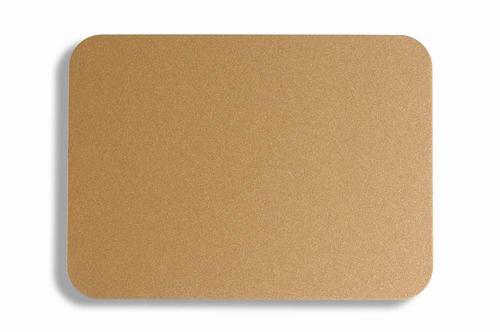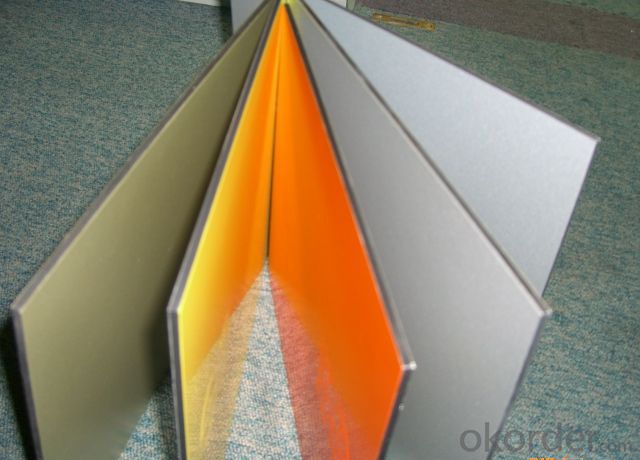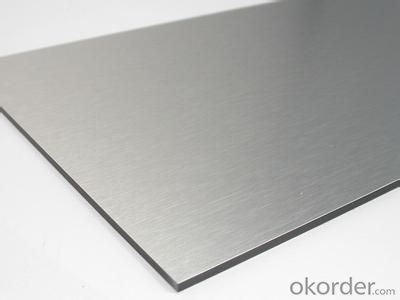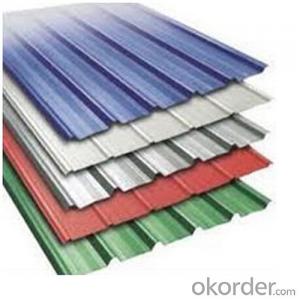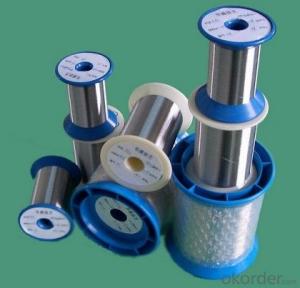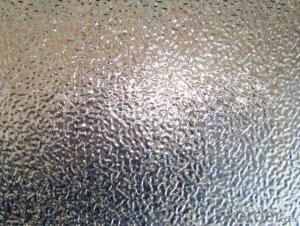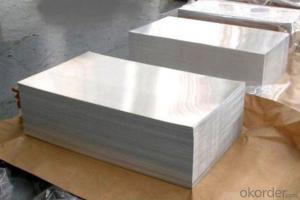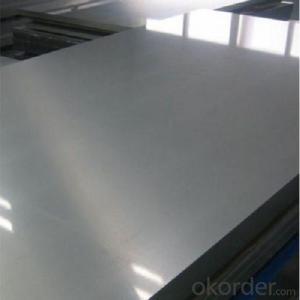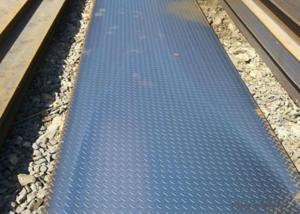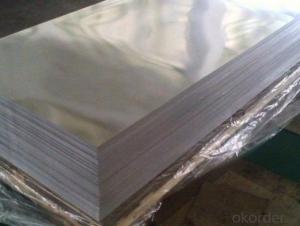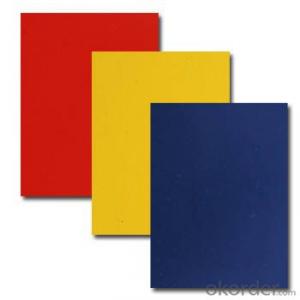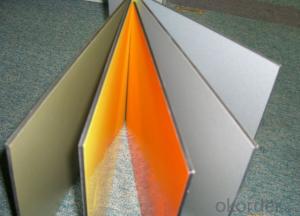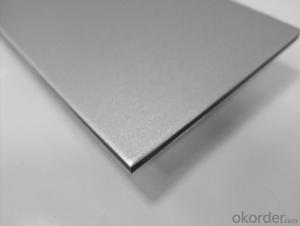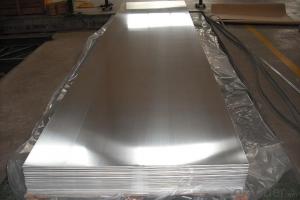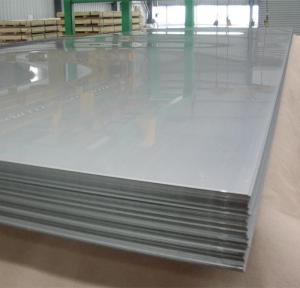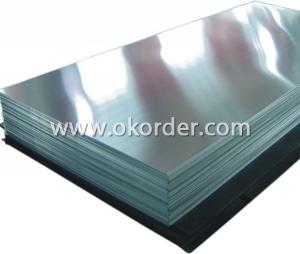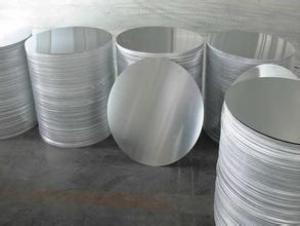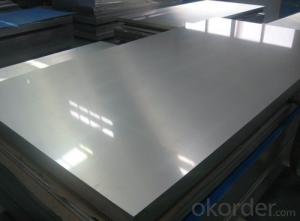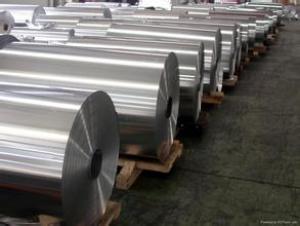Lightweight Aluminum Sheets White - Aluminium Composite Panel PE/PVDF - Good Price - High Quality
- Loading Port:
- Shanghai
- Payment Terms:
- TT or LC
- Min Order Qty:
- 1000 m.t.
- Supply Capability:
- 20000 m.t./month
OKorder Service Pledge
OKorder Financial Service
You Might Also Like
Structure of Aluminium Composite Panel Description:
Aluminum Composite Panel is a composite material made of aluminum and non-combustible mineral filled core. Though the core material does contain a small amount of combustible polyethylene, the main ingredient of the non-combustible mineral filled core does not permit the proliferation of flame and restricts smoke. It is a fire-safe material that passes mandatory requirements for exterior and interior application.It is an ideal material for external claddings, roof of pedestrian passage and other architectural applications.
Main Features of Aluminium Composite Panel:
1) Fireproof and water resistant, excellent heat and sound insulation
2) Excellent surface flatness and smoothness
3) Superior weather, corrosion and pollutant resistance
4) Even coating, various colors
5)Super peeling strength
6) Superior impact resistance
7) Lightweight and easy to process
8) Easy to maintain
Images of AluminiumComposite Panel:
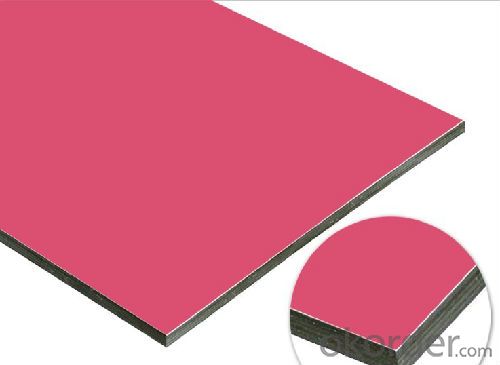
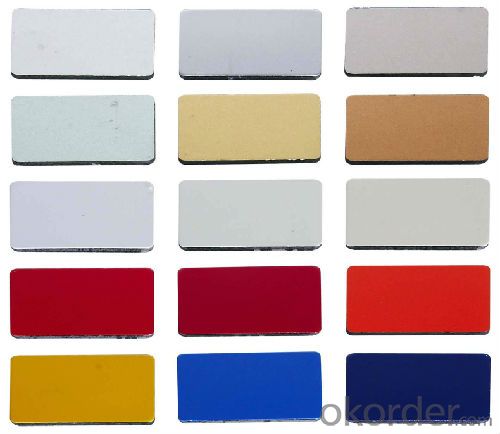
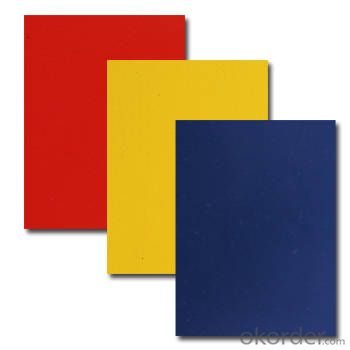
PE/PVDF Aluminium Composite Panel Specification:
| Width(mm) | 1220 | 1250 | 1500 | |||||
| Length(mm) | 2440 | Or according to customer's request | ||||||
| Panel thickness(mm) | 2 | 3 | 4 | 5 | 6 | |||
| Aluminum thickness(mm) | 0.10 | 0.12 | 0.15 | 0.18 | 0.21 | 0.3 | 0.4 | 0.5 |
| Coating | PVDF | PE | Brush | Mirror | Glossy | Wood and stone texture | ||
FAQ of Aluminium Composite Panel:
a.What is monthly capacity
---CNBM is one stated own company and our monthly capacity is about 20000㎡.
b. Now which countries do you export your goods?
---Now we export to South East Asia,Africa, North America,South America ect.
- Q: How are aluminum sheets different from aluminum plate?
- Aluminum sheets and aluminum plates are two forms of aluminum metal that differ primarily in terms of thickness. Aluminum sheets are typically thin, flat pieces of aluminum that are less than 6mm thick. They are commonly used in applications where lightweight and flexibility are important, such as in the construction of aircrafts, automobiles, and electronic devices. On the other hand, aluminum plates are thicker and heavier than sheets, typically measuring 6mm or more in thickness. Plates are often used in applications that require strength and durability, such as in the construction of heavy machinery, structural supports, and marine equipment. While both sheets and plates are made from aluminum, their distinct thicknesses make them suitable for different purposes.
- Q: Can aluminum sheets be used in food packaging?
- Indeed, aluminum sheets find widespread application in the realm of food packaging. The utilization of aluminum in this context is prevalent owing to its exceptional capability to shield food from detrimental elements like light, oxygen, moisture, and other external agents that may cause spoilage or contamination. Notably, aluminum sheets possess the qualities of being lightweight, long-lasting, and resistant to corrosion, rendering them perfectly suitable for an array of food packaging formats, including foil wraps, containers, trays, and pouches. Moreover, the recyclability of aluminum further solidifies its status as an eco-friendly option for food packaging.
- Q: What are the semi hard ones? What are the alloys? What are the anti rust ones, such as 3003505210606061, 7075?
- Three 3000 series aluminum representing 30033003 3A21. Also known as China's 3000 series aluminum antirust aluminum production process is more outstanding.3000 series aluminum is made of manganese as main components. The contents of 1.0-1.5 in between. Is a series of anti rust function better. Routine application in air conditioning, ice box, car etc. in the moist environment, price more than 1000 series, is a commonly used alloy series.Four 4000 series aluminum on behalf of the 4A01 4000 series aluminum plate belongs to the high silicon content series. Usually silicon content between 4.5-6.0%. Belongs to the building material, mechanical parts, forging materials, welding materials; low melting point, good corrosion resistance of the product description: has the characteristics of heat resistance, wear resistanceFive series of 5000 representative 5052.5005.5083.5A05.5000 series is a commonly used aluminum alloy aluminum series, the main elements of magnesium, magnesium content in 3-5%. Also called aluminum magnesium alloy. The main characteristics of low density, high tensile strength, elongation rate is high. In the same area under the weight of the aluminium magnesium alloy is lower than that of the other series. It is commonly used in aviation, such as aircraft fuel tank. The application in the conventional industries are more widely. The processing technology for slab continuous casting and rolling, which belongs to the aluminum plate series so can do deep processing of aluminum oxidation. More mature system in our country in 5000 series aluminum one.Six series of 6000 representatives of 6061 mainly contains two elements of magnesium and silicon, so the advantages of 4000 series and 5000 Series 6061 is a cold forging processing of aluminum products, suitable for applications in corrosion resistance, oxidation resistance requirement. Use good interface features excellent, easy coating, processing is good. Can be used for low pressure weapons and aircraft joints.
- Q: This question asks for a list of various methods used to treat the surface of aluminum sheets to improve their properties or appearance.
- <p>There are several types of surface treatment for aluminum sheets, each serving different purposes. These include: Anodizing, which creates a protective oxide layer and enhances corrosion resistance; Chemical Conversion Coating, such as chromate conversion, to improve paint adhesion and corrosion resistance; Electrolytic Polishing, which provides a smooth, shiny surface; Powder Coating, an electrostatic process that applies a durable coating; Paint Coating, offering a wide range of colors and finishes; and Mechanical Polishing, which smooths the surface and improves reflectivity. Each treatment has its specific applications and benefits, depending on the desired outcome for the aluminum sheet.</p>
- Q: What are the different methods of heat treating aluminum sheet?
- Aluminum sheet can undergo various heat treatment methods, each serving a specific purpose and achieving desired outcomes. Some commonly used methods include the following: 1. Solution Heat Treatment: The aluminum sheet is heated to a specific temperature, typically ranging from 900-1000°F (480-540°C), and kept at that temperature for a designated duration. This process aids in dissolving any soluble alloying elements present in the aluminum, resulting in a more uniform structure. 2. Quenching: Following the solution heat treatment, the aluminum sheet is rapidly cooled by immersing it in water, oil, or air. This rapid cooling helps retain the desired microstructure and properties, such as increased strength and hardness. 3. Aging: After quenching, the aluminum sheet undergoes an aging process. It is heated to a lower temperature, typically between 250-450°F (120-230°C), and maintained at that temperature for a specific period. This allows for the precipitation of fine particles within the aluminum, further enhancing its strength and hardness. 4. Precipitation Hardening: This method is specifically employed for certain aluminum alloys, such as the 2000 and 7000 series, which respond well to precipitation hardening. It involves a combination of solution heat treatment, quenching, and aging, resulting in a highly strengthened and durable aluminum sheet. 5. Annealing: Annealing is a heat treatment process that aims to soften the aluminum sheet and relieve any internal stresses. The sheet is heated to a specific temperature, typically around 600-700°F (315-370°C), and then slowly cooled. This enhances the formability and machinability of the aluminum. 6. Stress Relieving: Similar to annealing, stress relieving is specifically used to reduce residual stresses in the aluminum sheet after fabrication. The sheet is heated to a temperature below its annealing temperature and then slowly cooled. The choice of heat treatment method for aluminum sheet depends on the desired properties, alloy composition, and intended application. Each method offers unique advantages and can significantly enhance the mechanical and physical properties of the aluminum sheet.
- Q: If I were to make an aluminum mold and cover it with a release agent, could I cast aluminum into it? Or would the two parts fuse together? I'm trying to find an alternative to sand casting.Thank you!
- This may be a little more difficult but offers better detail than sand casting. Lost wax casting Investment or ceramic shell You can make molds to form the wax but investment or ceramic shell are destroyed in the process
- Q: I was looking at Audioque subs earlier and what is the difference between copper and aluminum coiled subs. do aluminum last longer or something?
- to maintain it common......Copper is better at removing or soaking up warmth than aluminum yet aluminum is better at dissipating it or doing away with it. i think it is why you spot aluminum CPU coolers with copper cores.
- Q: Can aluminum sheets be used for automotive applications?
- Yes, aluminum sheets can be used for automotive applications. Aluminum is lightweight, strong, and has excellent corrosion resistance, making it an ideal material for various automotive components such as body panels, hoods, doors, and engine parts.
- Q: Can aluminum sheet be used for electrical conductivity applications?
- Yes, aluminum sheet can be used for electrical conductivity applications. Aluminum has good electrical conductivity properties, making it suitable for various electrical applications such as wiring, connectors, and conductive components.
- Q: why does the bubble apear a few minutes later after putting aluminum sheet into diluted hydrochloric acid?
- Aluminum element is extremely activated and will react with oxygen, generating aluminum oxide, once being exposed in air, so there is a layer of aluminum oxide on the surface of daily aluminum products including aluminum sheet. When aluminum sheet is put into diluted hydrochloric acid, aluminum oxide on the surface will firstly react with hydrochloric acid, generating aluminium chloride and water, the process won’t generate bubble, but after finishing the reaction of aluminum oxide on the surface, when the exposed aluminum element reacts with hydrochloric acid, generating aluminium chloride and oxygen, the bubble appears.
Send your message to us
Lightweight Aluminum Sheets White - Aluminium Composite Panel PE/PVDF - Good Price - High Quality
- Loading Port:
- Shanghai
- Payment Terms:
- TT or LC
- Min Order Qty:
- 1000 m.t.
- Supply Capability:
- 20000 m.t./month
OKorder Service Pledge
OKorder Financial Service
Similar products
Hot products
Hot Searches
Related keywords
